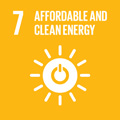- Docente: Matteo Minelli
- Credits: 6
- SSD: ING-IND/24
- Language: Italian
- Moduli: Matteo Minelli (Modulo 1) Francesco Miccio (Modulo 2)
- Teaching Mode: Traditional lectures (Modulo 1) Traditional lectures (Modulo 2)
- Campus: Bologna
-
Corso:
First cycle degree programme (L) in
Energy Engineering (cod. 0924)
Also valid for First cycle degree programme (L) in Energy Engineering (cod. 0924)
First cycle degree programme (L) in Energy Engineering (cod. 0924)
-
from Sep 16, 2024 to Nov 04, 2024
-
from Nov 06, 2024 to Dec 16, 2024
Learning outcomes
The knowledge of quantitative methods for the analysis of process and systems of the process industry, aimed in particular at energy resources management, the thermochemical conversion of fuels and emissions control.
Course contents
The course is taught in Italian
Module I
1. Schematic representation of process plants: flow diagrams and process diagrams and analysis as a black box system.
2. State of material and energetic currents: recalls on composition variables and flow variables, definitions, properties, relationships and units of measurement.
3. The integral balance equation of an extensive property: accumulation, generative and flow terms.
4. Mass balances for single apparatuses, in the presence of chemical reactions. Limiting and excess reagent, conversion, selectivity and yield.
5. The integral energy balance equation and application to the solution of typical problems of process engineering.
6. Energy balances for single devices, in the presence and absence of chemical reactions. Recap on the calculation of enthalpy variations for pure substances: use of thermodynamic tables and diagrams, of molar heats of the ideal gas, of latent heats. Criteria for choosing the most appropriate reference state in relation to the availability of data. Discussion on thermochemistry: standard state, reaction enthalpy, standard reaction enthalpy, standard formation enthalpy, combustion enthalpy.
7. Applications of mass and energy balances to systems with combustion reactions: calculation of the composition of dry and wet fumes as the composition of the fuel and excess air vary. Lower and upper calorific value. Calculation of the theoretical flame temperature.
Module II
1. Review of simple and complex systems, stationary and transient systems, lumped and distributed parameter systems. Variables
2. Complex systems with a large number of variables/equations. Solution strategies based on matrices and directed graphs. Variable and mediated properties
3. Anthropic release of CO2 into the atmosphere: greenhouse effect, industrial sources, impact mitigation techniques, reuse of CO2 in industrial processes.
4. Principles of green chemistry and implications in process strategy
5. Fossil and renewable fuels (solid, liquid and gaseous): definitions and properties
6. Thermochemical processes of fuel conversion: combustion, gasification and pyrolysis. Review of operating conditions and introduction to the different technologies (pre-mixed, diffusion, grid, turbulent, dispersed systems)
7. Continuous and discontinuous chemical reactors: types (mixed and tubular). Reviews of chemical equilibrium, kinetics, catalysis and bioreactors
8. Absorption/adsorption of compounds by gaseous currents: equipment and calculation/verification criteria. Applications for purification of liquid and gaseous effluents.
9. Recalls on heat exchangers. Evaporative cooling towers
10. Review of liquid-vapour equilibrium for pure compounds and in binary mixtures
11.Permeability, selectivity and separation of liquid/gas mixtures with selective permeable membranes
12. Multiphase systems: fixed beds, fluidized beds, entrained beds, circulating fluidized beds. Applications of multiphase systems for thermochemical processes, chemical reactions, drying and convective transport.
Readings/Bibliography
Lecture notes made available by the teachers on virtuale.unibo.it.
R. M. Felder, R. W.Rousseau, Elementary Principles of Chemical Processes, J. Wiley & Sons, New York, 3rd ed., 2000.
F. P. Foraboschi, Chemical Engineering Principia, UTET, Torino
O.A. Hougen, K. M. Watson, R. A.Ragatz, Chemical Process Principles Part I. Second Edition. John Wiley & Sons, Inc., New York (1954).
- McCabe, Smith, Harriott, Unit Operations of Chemical Engineering, McGraw-Hill Education, 20049, ISBN 978-0-07-284823-6
- Kunii, Levenspiel; Fluidization Engineering, Butterworth-Heinemann, 1991, ISBN 978-0-08-050664-7
Teaching methods
Direct teaching lectures for theoretical contents and excercises sessions.
Assessment methods
The exam consists of two distinct parts for the assessment of the skills acquired by the students:
a written test of a computational type in which the numerical solution of matter and energy balance problems is requested (module 1) and the resolution of a process case as a verification or dimensioning calculation (module 2).
The consultation of books or notes, nor the use of personal computers and / or tablets is not allowed. an oral exam in which the student's ability to face and solve teaching problems and the understanding of the theoretical aspects of the course will be verified.
Office hours
See the website of Matteo Minelli
See the website of Francesco Miccio
SDGs



This teaching activity contributes to the achievement of the Sustainable Development Goals of the UN 2030 Agenda.
